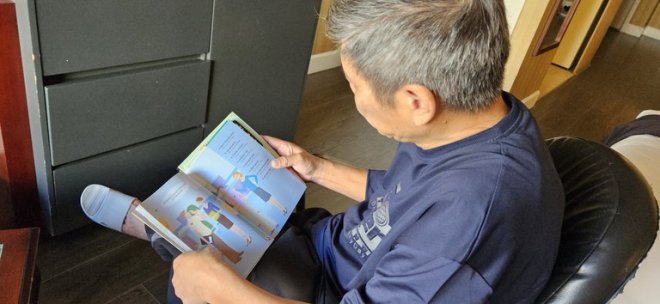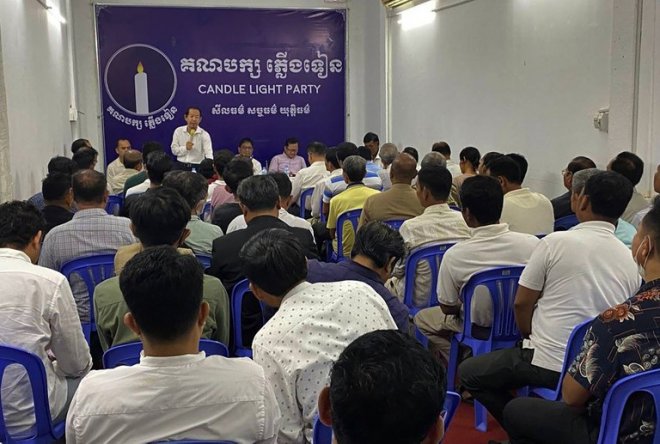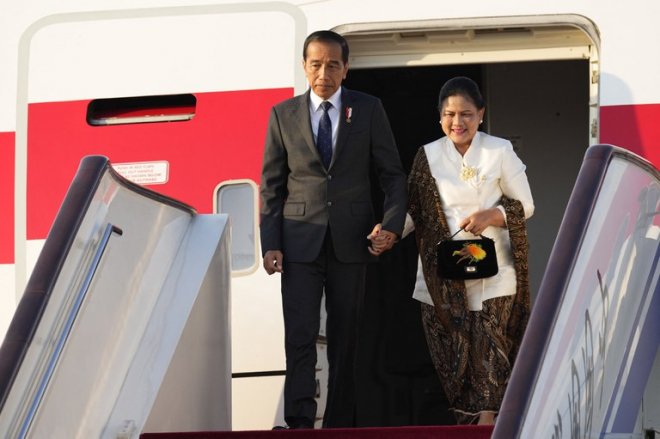Much of tourism-reliant Southeast Asia has no plans to restrict Chinese tourists
Thailand joined most of Southeast Asia’s tourism-reliant economies Thursday in keeping entry restrictions lax for Chinese tourists who resume foreign travel next week, despite WHO warning that Beijing is underrepresenting the severity of its COVID-19 outbreak.Like Indonesia, Malaysia and the Philippines, Thailand announced that inbound travelers from China wouldn’t need pre-departure COVID tests, despite a steep rise in infections in their country. These Southeast Asian countries, longtime magnets for Chinese tourist dollars, are bidding to revive their pandemic-battered economies.
After a meeting of health, tourism and other officials, Thai Public Health Minister Anutin Charnvirakul told reporters that everyone must wear face masks in crowded places.
“Thailand will not require COVID test results from tourists from any country. …This is an opportunity to restore our economy and recover from losses we suffered for nearly three years,” he said.
“[T]here will not be any discrimination against a particular country because COVID-19 is spreading in all countries and the strains are similar. So, it should not be an issue of discriminating against any country.”
Thailand will, however, reinstate a requirement that travelers have at least two COVID-19 vaccination jabs and health insurance to meet treatment costs if they get infected.
On Dec. 27, China announced that it would lift most of its stringent travel restrictions beginning on Jan. 8. After the pandemic was first detected in China in late 2019, Beijing had severely restricted international travel, allowing it only unless it was absolutely necessary.
‘Lifeblood’ of region’s tourism industry
Right after the announcement, travel service provider trip.com recorded a 254% increase in outbound flight bookings from mainland China compared to a day earlier. Southeast Asian nations and the United States were among the top 10 destinations.
No surprise there. Before the pandemic broke out in the world’s most populous nation, 32 million Chinese citizens traveled to Southeast Asia in 2019, according to Rane Worldview, a geopolitical risk research firm. A year later, that number dropped to 4 million.
“Chinese visitors are the lifeblood of Southeast Asia’s tourism sector, and their continued absence will further hamper the region"s economic recovery,” it said in a note in September last year.
“The fallout from the COVID-19 pandemic … has hit Southeast Asian countries hard – particularly Thailand, the Philippines and Malaysia, where tourism previously generated a significant amount of both revenue and jobs.”
Back then, Rane Worldview said that a prolonged absence of Chinese visitors would “continue to stymie the post-pandemic recoveries” of these nations’ crucial tourism sectors.
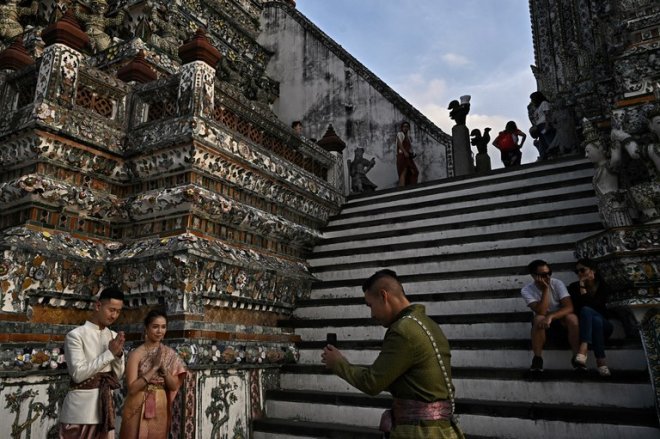 Tourists in traditional Thai costumes take pictures at Wat Arun Buddhist temple in Bangkok, Dec. 9, 2022. Credit: Lillian Suwanrumpha/AFP‘Wish all tourists are tested for COVID’
Tourists in traditional Thai costumes take pictures at Wat Arun Buddhist temple in Bangkok, Dec. 9, 2022. Credit: Lillian Suwanrumpha/AFP‘Wish all tourists are tested for COVID’Tour operators, hoteliers and allied tourism businesses in Southeast Asian nations no doubt are salivating at the prospect of the return of Chinese tourists.
Still, after seeing the coronavirus pandemic ravage their countries with knock-on effects hammering local economies, some are tempering their eagerness with caution.
Zack, a boat operator in Pulau Kapas, Terengganu, an island destination in Malaysia, lives in fear of having to endure another COVID-19 lockdown.
“The government should temporarily close its doors to Chinese tourists until things return to normal,” Zack, who preferred to only disclose his first name because he did not want any publicity, told BenarNews, an RFA-affiliated news service.
“I am afraid of being locked down again,” he said, adding that no tourists would visit at all if there were a lockdown because of a rise in infections.
Last week, Malaysia said it would screen all incoming travelers for fever and test wastewater on flights arriving from China. Those with high fevers, or who are experiencing respiratory illnesses or have COVID-19 symptoms will be sent to quarantine centers or to health officials for additional testing.
Sabah which, along with Sarawak, has more autonomy than other Malaysian states, however broke from the federal government’s COVID traveler policy.
Located on Borneo island and a popular destination for Chinese tourists, Sabah decided that starting on Jan. 8, travelers from China need to be fully vaccinated. They also would need to show proof of a negative COVID test within 48 hours before their departure abroad.
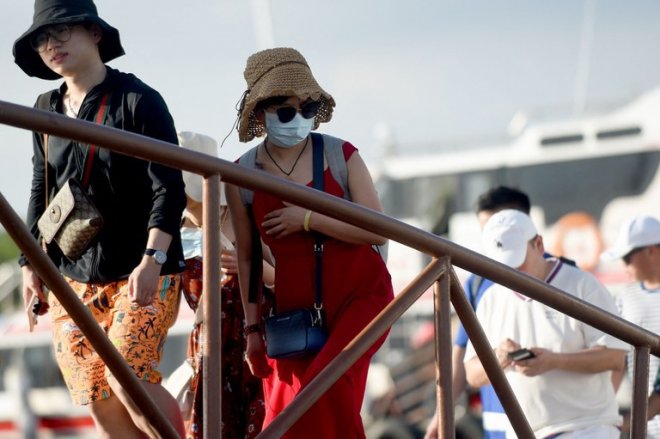 A Chinese tourist (center) wearing a facemask as a preventative measure after a coronavirus outbreak, which began in the Chinese city of Wuhan, arrives with others from Nusa Penida at the fast boat pier in Serangan island in Denpasar, the capital of Bali, Indonesia, Jan. 27, 2020. Credit: Sonny Tumbelaka/AFPIn Thailand, Pornpimol Rungrasmisup, the owner of the Thierry Resort in Chiang Mai, told BenarNews that she was in two minds about her country’s policy on Chinese tourists.
A Chinese tourist (center) wearing a facemask as a preventative measure after a coronavirus outbreak, which began in the Chinese city of Wuhan, arrives with others from Nusa Penida at the fast boat pier in Serangan island in Denpasar, the capital of Bali, Indonesia, Jan. 27, 2020. Credit: Sonny Tumbelaka/AFPIn Thailand, Pornpimol Rungrasmisup, the owner of the Thierry Resort in Chiang Mai, told BenarNews that she was in two minds about her country’s policy on Chinese tourists.“Chinese going outbound is a huge deal for us, it means a good sale,” she said, referring to the fact that of the nearly 40 million foreign tourists who visited Thailand in 2019, more than a quarter were Chinese.
“But when I learned there would be no COVID test, I felt uncomfortable. We want to welcome Chinese tourists. Chiang Mai is readying for them but I wish all tourists are tested for COVID,” Pornpimol said.
Thai tourism authorities predict between 18 to 25 million tourist arrivals this year, with the Thai Chamber of Commerce forecasting that 5 million of them will be Chinese nationals.
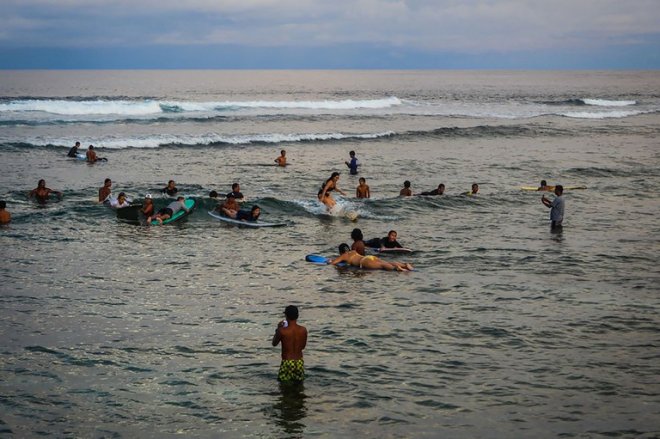 Tourists surf the waves in General Luna town, on the southern Philippine island of Siargao, Oct. 7, 2022. Credit: Ferdinandh Cabrera/AFPIn the Philippines, which recently ruled out travel restrictions for foreign tourists despite the spike in cases in China, one doctor advocated strict restrictions for travelers from China.
Tourists surf the waves in General Luna town, on the southern Philippine island of Siargao, Oct. 7, 2022. Credit: Ferdinandh Cabrera/AFPIn the Philippines, which recently ruled out travel restrictions for foreign tourists despite the spike in cases in China, one doctor advocated strict restrictions for travelers from China.“We need to ask the Chinese tourists to submit an RT-PCR test 48 hours prior to the flight and, of course, test them upon arrival,” Dr. Tony Leachon, who was on a team that formerly advised the government on COVID-19, told BenarNews.
A new sub-variant could reverse gains that the Philippines has made in controlling the spread of the virus, he said.
“We can’t stop the spread of COVID-19, but pre-departure testing and the requirement to show a negative test result when flying from China to the Philippines can help slow the spread as we work to identify and understand any potential new variants.”
The Indonesian government, meanwhile, said that it wasn’t planning any special entry restrictions on Chinese travelers because its population had a high degree of immunity.
However, epidemiologist Dicky Budiman said it was necessary to be continually vigilant.
“Indonesia must keep tightening restrictions on foreign tourists to prevent a resurgence of COVID-19. There must be a mechanism or procedure that can at least guarantee that anyone who enters Indonesia does not carry any harmful pathogens,” he told BenarNews.
“If tourists who come do not have booster vaccinations, then they must undergo a PCR test to confirm negative for COVID-19.”
Mostly, people in Southeast Asia hope that the Chinese tourists have been effectively vaccinated.
Philippine taxi driver Marionito Marcos, 58, who services the route from the country’s main airport in Metro Manila, likened the situation to Russian roulette.
“You never know if your passenger has it or not. They might be carriers, we just don’t know,” he told BenarNews.
“Still, people have to work and survive too. And I believe that as long as you have received vaccines, you’ll be ok. This is our new normal,” Marcos said.
BenarNews is an RFA-affiliated news service.
[圖擷取自網路,如有疑問請私訊]
|
本篇 |
不想錯過? 請追蹤FB專頁! |
| 喜歡這篇嗎?快分享吧! |
相關文章
AsianNewsCast








